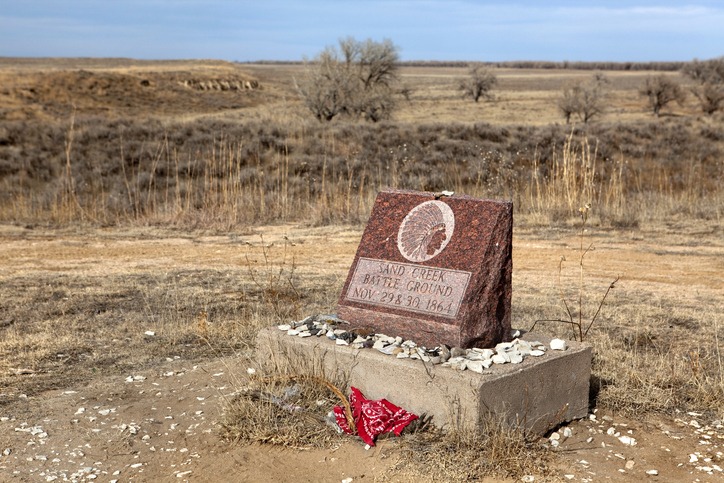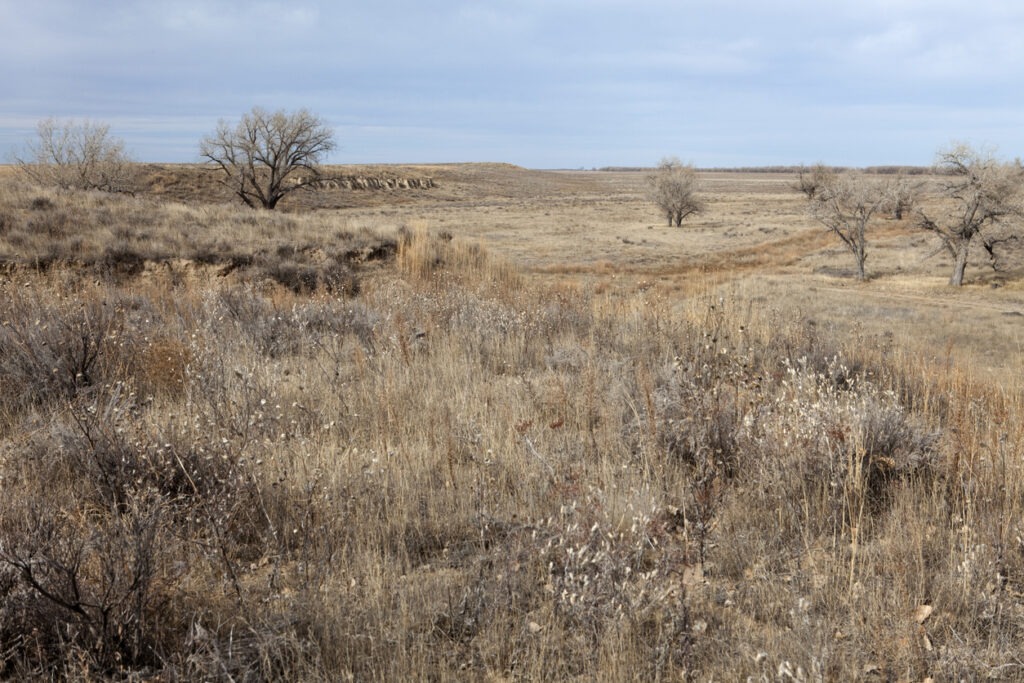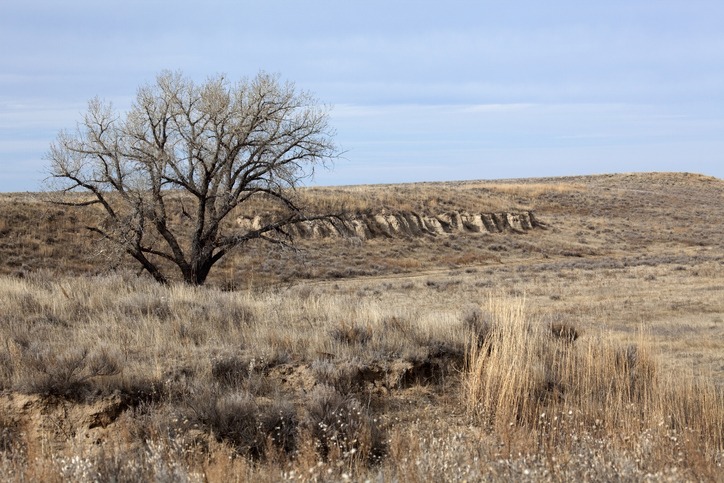Nestled on the high plains of southeastern Colorado, the Sand Creek Massacre National Historic Site preserves the memory of one of the most tragic and pivotal events in the history of the American West. On November 29, 1864, more than 230 Cheyenne and Arapaho people—most of them women, children, and the elderly—were killed in a surprise attack by U.S. soldiers. The site now serves not only as a reminder of the atrocities committed but also as a place of education, healing, and quiet reflection.
Located near Eads, Colorado, the site offers visitors the chance to walk the ground where history unfolded, learn from exhibits and interpretive signage, and pay their respects to the lives lost. For those traveling through southeastern Colorado or following the Santa Fe Trail Scenic and Historic Byway, this solemn and powerful destination provides an important opportunity to confront and understand Colorado’s complex and painful past.
The History of the Sand Creek Massacre
In the fall of 1864, amidst growing tension between Indigenous communities and settlers in Colorado Territory, a group of Cheyenne and Arapaho people—led by peace chiefs Black Kettle and White Antelope—set up camp near Sand Creek. They believed that they would be protected by the U.S. government. Despite having raised an American flag and a white flag of truce, the camp was attacked. The culprit was a unit of 675 soldiers from the Colorado U.S. Volunteer Cavalry under Colonel John Chivington.
Over the course of several hours, hundreds were killed and mutilated in what would later be widely condemned, including by military investigations and Congressional inquiry. The massacre remains a defining moment in the history of the Plains tribes and in the nation’s reckoning with its treatment of Indigenous peoples.
Today, the Sand Creek Massacre National Historic Site exists to honor the victims, acknowledge the harm, and educate future generations.

What to Expect When You Visit
The site is remote and quiet, offering a peaceful yet sobering atmosphere. Visitors are encouraged to move through the space with care and intention. Start your visit at the Visitor Contact Station, where you can speak with park staff, view interpretive displays, and collect maps and information.
A short walking trail leads to an overlook of the massacre site, with wayside signs that explain the event and highlight key locations. Interpretive materials help visitors understand the stories of those who lived and died here.
The walking trail is about 1.5 miles round trip and follows open prairie terrain, with little shade—so bring sun protection, water, and appropriate footwear. There are no food services or water fountains at the site, and cell service may be limited.
📍 Location:
55411 County Road W
Eads, CO 81036
Google Maps Directions
🕒 Hours:
The site is open daily from 9 AM to 4 PM, but hours can vary by season. Be sure to check the official NPS hours and information page before visiting.
🎟️ Admission is free.
How to Pay Your Respects
The National Park Service and affiliated tribes ask visitors to treat the land as a memorial and sacred site. Please:
- Stay on designated paths and trails
- Speak quietly and be mindful of other visitors
- Refrain from removing natural materials or artifacts
- Reflect and learn with humility and openness
This is not just a historical site—it is a resting place for those who were killed, and it holds deep spiritual significance for descendants of the Cheyenne and Arapaho Nations.
Each year, tribal members and the public are welcome to attend the Sand Creek Massacre Spiritual Healing Run/Walk, a commemorative event held to honor the victims and promote healing. You can learn more about it through the Northern Cheyenne Tribe or Southern Cheyenne and Arapaho Tribes websites.

Educational Resources and Further Reading
To deepen your understanding of the Sand Creek Massacre and its legacy, consider these resources:
- Official NPS Site History & Culture Page
- “Bury My Heart at Wounded Knee” by Dee Brown
- “A Misplaced Massacre” by Ari Kelman
- History Colorado’s Indigenous History Resources
For educators or those planning group visits, the park also offers curriculum guides and lesson plans.
Plan Your Visit
The Sand Creek Massacre National Historic Site is not your typical day trip—but that’s what makes it so meaningful. It invites you to slow down, reflect, and learn. It’s a place where history is not just told but felt. Through the wind across the plains, the silence of the landscape, and the stories etched into the earth.
Whether you’re exploring Colorado’s cultural landmarks or making a purposeful stop on your road trip through the southeastern part of the state, this site serves as a powerful reminder of our shared responsibility to remember, reckon, and grow.
➡️ Learn more and plan your visit: https://www.nps.gov/sand/index.htm

